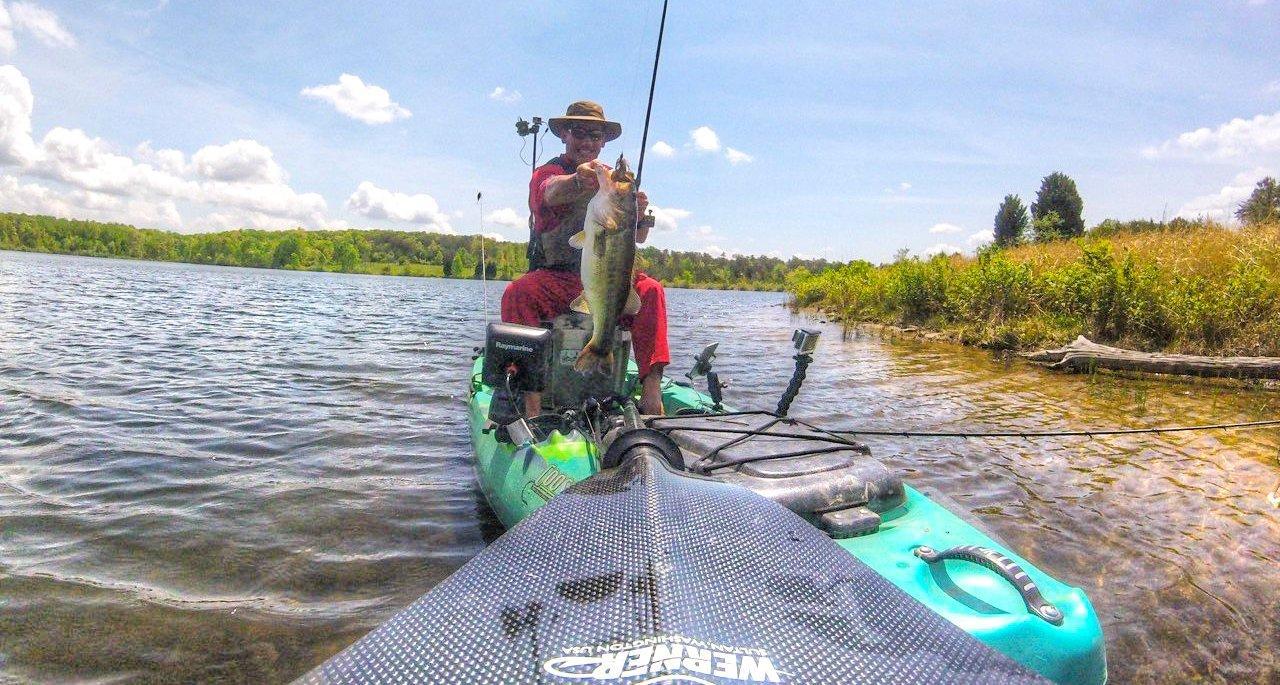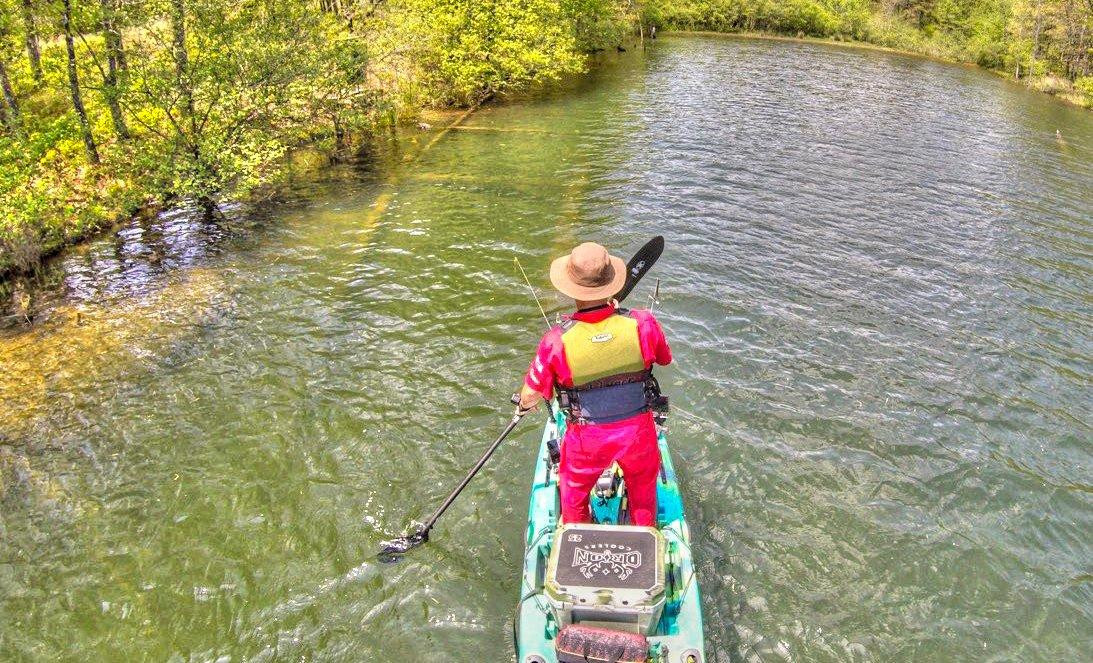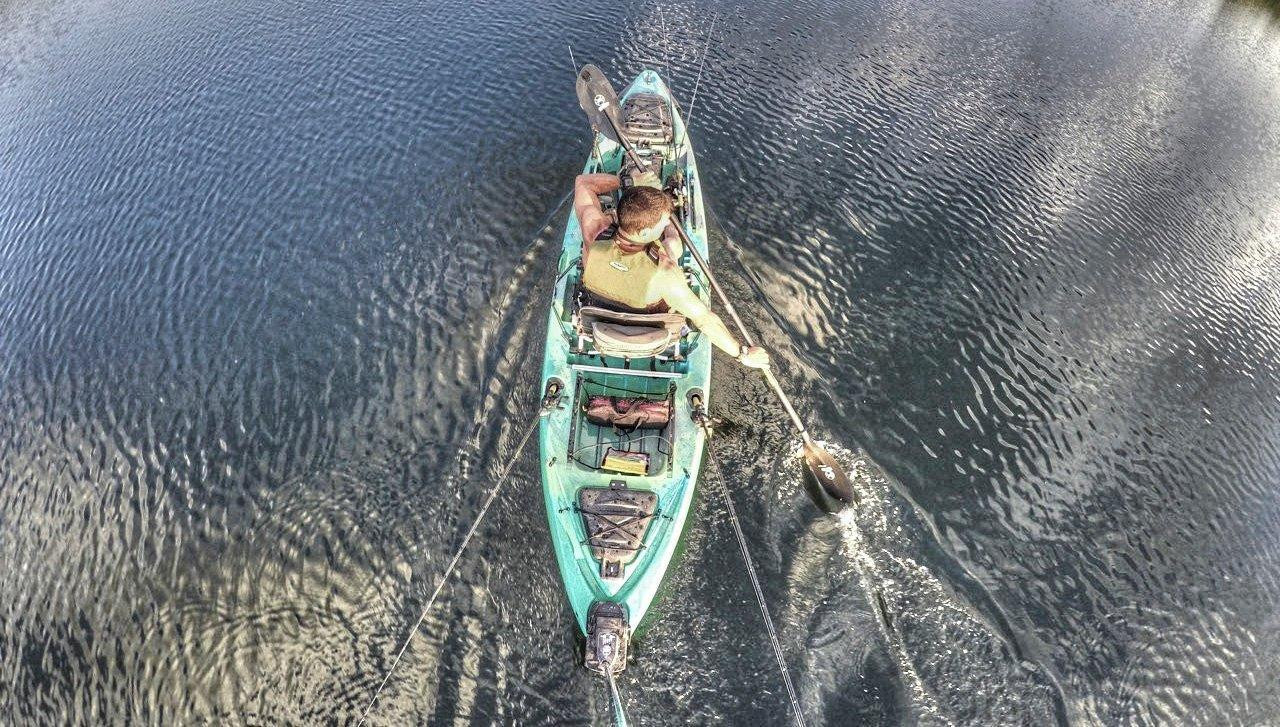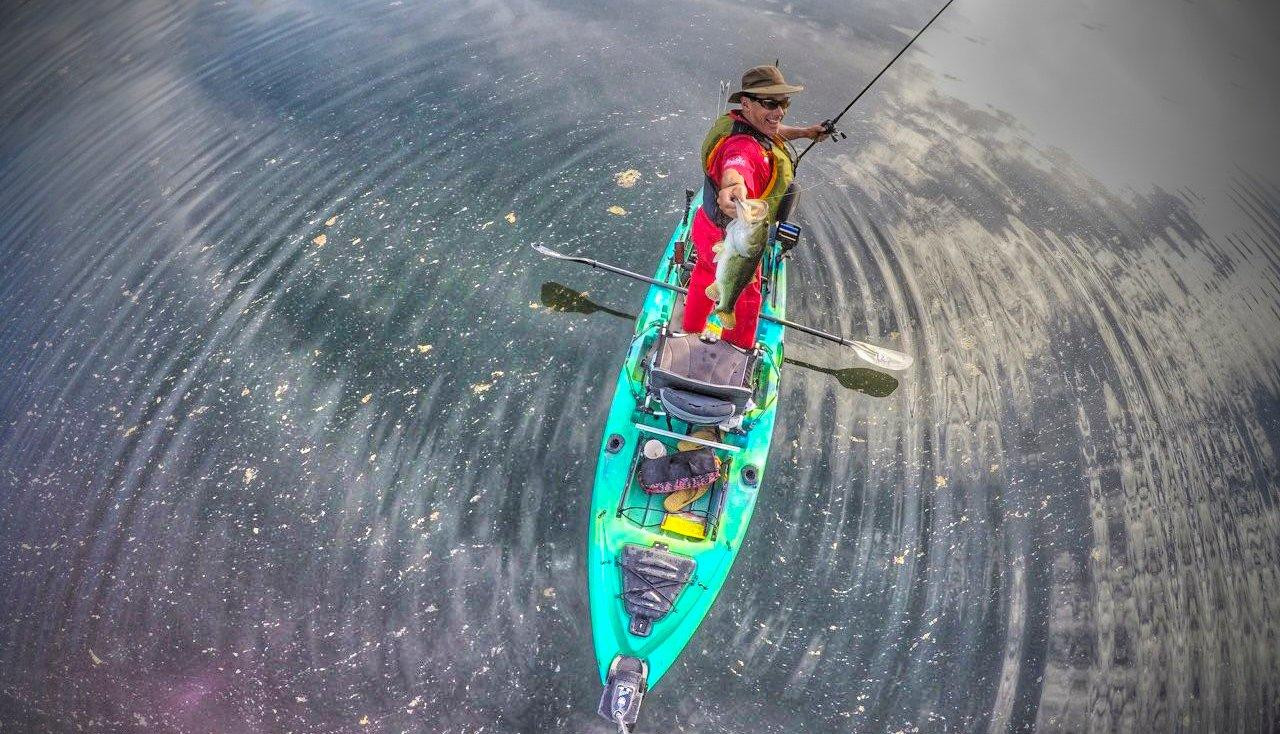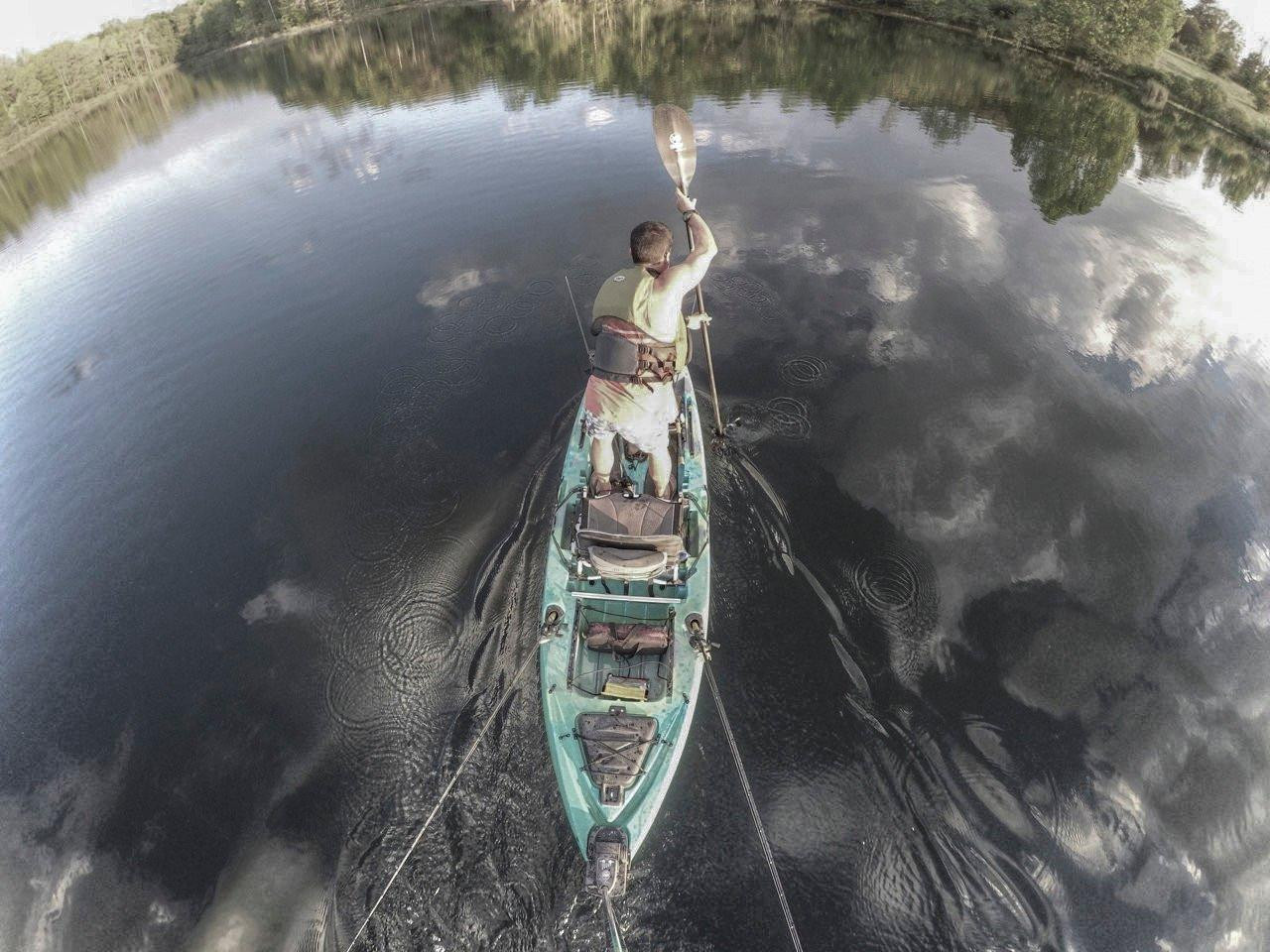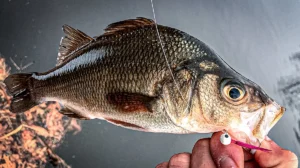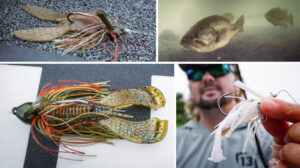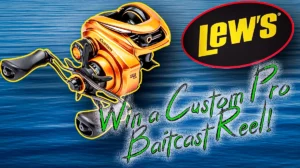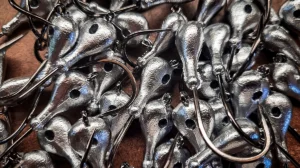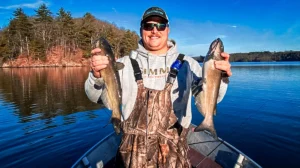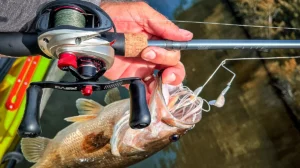It should be no surprise that how fast, far and in-control you can be in your fishing kayak has a lot to do with your paddle strokes. Everyone comes with their own personal horsepower and strength-to-body-weight ratio, but your efficiency is directly related to how well you apply that power to your paddle. I will give you the most basic stroke technique for the forward stroke, reverse stroke, forward sweep, reverse sweep and paddling standing up while kayak fishing.
I will be demonstrating in my Jackson Kayak Coosa HD, which is 12-foot long and 34-inches wide. It is stable enough for stand-up fishing. I will be using a Werner “Cyprus Hooked” paddle which is a foam core, carbon fiber paddle, and as good as they get.
The quality of the paddle isn’t important for learning proper strokes, but the transfer of energy between the paddler and the water is improved with a good paddle, and they are much lighter weight. My kayak paddle is 240 cm long, which is a great length to look at if you have a kayak with elevated seating.
If your fishing kayak has the seat very low to the water, you’ll want to look at a 210-220 cm paddle length. You will notice that I use my Orion 25 Cooler as a super elevated seat for much of my kayak fishing. The benefits of that are simply to have a better vantage point for seeing structure and fish.
Sitting on the cooler doubles that visibility, and standing up doubles it again, for what it’s worth.
Before we get into the individual strokes, let’s look at some basics for holding and using your paddle.
Hand position and Concepts
- Your right (dominant) hand is in charge of controlling the paddle angles.
- Your left (off) hand acts as a bearing and allows the paddle shaft to spin in that hand.
- Most paddles have an “offset” to the blade angles. This allows for a more natural action of the hands/wrist, and helps cut the wind on the top paddle blade that is exposed to the wind during the stroke.
Sitting strokes
Forward Stroke
- A vertical blade is the most efficient for paddling forwards or backwards. A paddle blade being pulled along side of the boat uses more energy to pull the boat forward and less of the energy trying to turn it away from the paddle. The higher your top hand is, the more vertical the paddle is.
- Begin your stroke with the paddle up at your toes and finish with the paddle at your hips. This gives you a nice long stroke and cuts down on the stroke rate but not the speed.
- Try to rotate your torso during the stroke so that your torso is pulling the paddle back/boat forward, not just your arms. Keep your top hand around eye level as a reference point.
Reverse Stroke
- Same as forward stroke but in reverse.
- The paddle starts at hips and goes up to your toes.
- Keep your paddle as vertical as possible.
Turning strokes
To turn the kayak the most efficiently, you will want the paddle blade to go as far from the side of the boat as possible during the stroke. To do this you’ll keep your top hand down low (opposite of the forward stroke).
Forward Sweep
- Start with your paddle up at your toes and your paddle as parallel to the boat as possible.
- Push the blade straight away from the toes, away from the side of the boat in an arc. The boat should turn smoothly away from the paddle.
- Take the blade out at or behind your hips when you are happy with the direction you are headed.
- If you are moving forwards and the boat is already spinning the wrong way, it may take more than one sweep stroke to overcome the spin momentum in the wrong direction.
Reverse Sweep
- Paddle goes in behind you near the boat (behind your seat).
- Push the paddle straight away from the boat using the non-power side of the paddle (convex side).
- Take the paddle out of the water when you are facing the direction you want, or when it gets up to your toes.
Rudder
If you are moving forward already and you want to control the boat using very little energy, use the paddle as a rudder by reaching behind you with the blade nearly parallel to the boat. Just drag the paddle with it slicing through the water like a rudder. The paddle should be on the side of the boat that you want to turn towards. Applying a little pressure away from the boat will turn it nicely.
Stand-up Paddling
Forward Stroke
- You hold your paddle with the end of the blade, or near the end of the shaft depending on how tall you are.
- Using a vertical paddle and keeping the blade right next to the kayak, pull the paddle from as far as you can reach towards the bow to just behind your feet.
- The boat will want to turn after few strokes and you have two main choices:
- You can switch hands and paddle on the other side or:
- You can do an “offside” stroke or two to straighten out the direction again.
Offside stroke
The advantages of doing offside strokes is that you don’t have to switch hands and can always use your stronger arm.
Simply reach your paddle over the boat to the opposite side of the boat you normally paddle on and put it in as far forward as you can reach and pull back to behind your feet.
This stroke won’t feel as strong (it isn’t) as your normal stroke, but it will keep you from always switching hands when paddling standing up.
Draw Strokes
You can also pull your boat sideways with your paddle. Facing your paddle blade parallel to the boat, versus perpendicular, you can reach out away from the boat and “draw” the boat towards the paddle. If you do a draw up near the bow, it will turn the boat towards the paddle. If you do a draw in the middle it will pull the entire boat sideways without turning it. If you draw towards the stern/back of the boat, it will turn the boat away from the paddle blade.
There are other more advanced strokes that can be used such as C-Strokes, offside c-strokes, reverse compound strokes, side-slip strokes and more. However, the basics described here will more than get you to your favorite fishing spots easier and with more control.
Another tidbit worth noting is that you can use your rod tip/lure for minor boat placement adjustments while standing up. You can forward sweep, reverse sweep and forward stroke with your rod tip /lure. Try it!


